19-07-2023

The unique island of Iceland is truly a photographer’s paradise. From striking volcanic craters to expansive glaciers and cascading waterfalls, the untouched natural beauty of Iceland makes for prime photography material.
No matter if you’re an experienced photographer or just love taking pictures for fun, there are amazing photography opportunities for you in this beautiful country. Let’s explore all things Iceland photography, so you can find the best spots to go, discover workshops to join and learn our top photography tips for this unique environment.
The three most popular themes among photographers in Iceland are landscapes, wildlife and, of course, the famous Northern Lights. While almost all of Iceland could make an incredible photography subject with spectacular natural wonders everywhere you turn, there are certain places in Iceland that photographers can’t miss!
Here are some of the top photography locations to see in Iceland, from amazing landscapes to the best wildlife habitats across the country. Take a look through our top destination picks to create your own ideal Iceland photography trip itinerary.
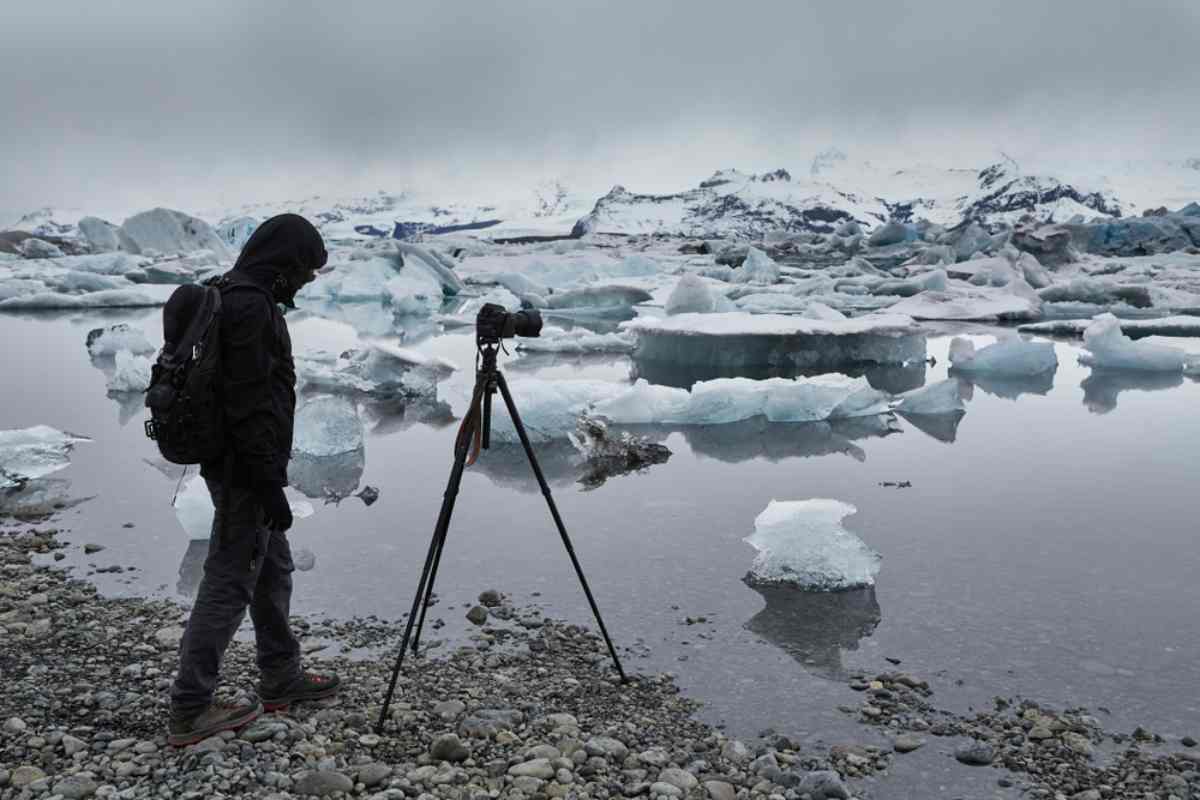
From the spectacular Thingvellir National Park, to the dramatic Gullfoss Waterfall and steaming Haukadalur Geothermal Valley, every stop along the Golden Circle route in Iceland is incredibly picturesque.
With many of the top locations for landscape photography in Iceland along the route, the Golden Circle can be easily driven in a day and conveniently starts and ends in Reykjavik. Just make sure to plan enough time to stop at each interesting sight!
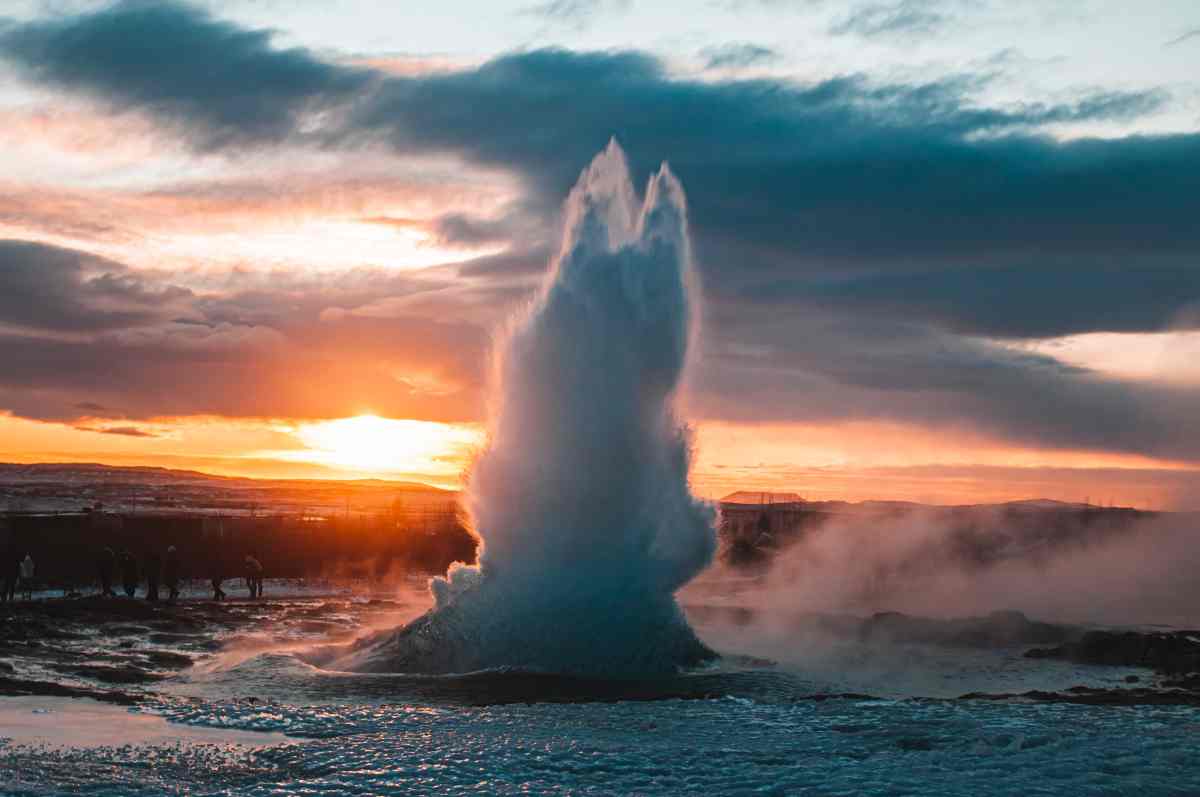
When it comes to Iceland landscape photography, the lovely coastal village of Vik and the adjacent black sand beach of Reynisfjara are among the top places to be. One of the most popular areas in Iceland for photographers, the colorful houses of this tiny village in a beautiful mountain valley make for amazing shots.
Heading to the seafront, you’ll find the striking basalt rock columns of Reynisfjara standing tall against the volcanic sand and crashing Atlantic waves. What a picture!
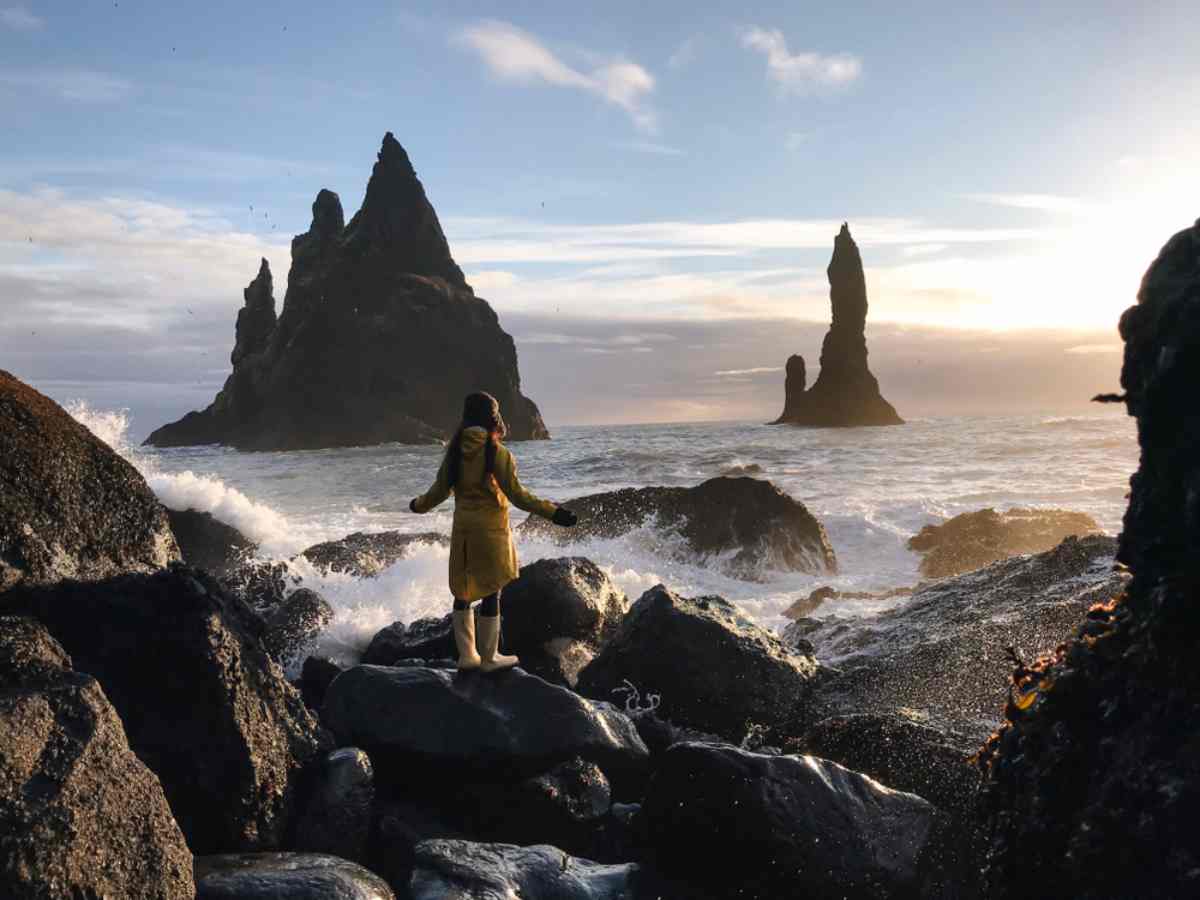
You can’t go to Iceland without taking pictures of at least one glacier! Where better to experience the majesty of Iceland’s vast glaciers than Jokulsarlon Glacier Lagoon? At this expansive ice lagoon, you’ll see chunks of ice floating across the water’s surface and seals swimming or relaxing on the icebergs.
Next to Jokulsarlon Glacier Lagoon, just across the main road, you’ll find Diamond Beach. One of the top locations for landscape photography in Iceland, Diamond Beach features huge iceberg fragments glistening like diamonds atop the black sand – beautiful!
While in this area, you can also enjoy exploring the spectacular Skaftafell Nature Reserve, which will give you plenty of opportunity to practice your Iceland landscape photography skills. Be sure to capture the amazing Svartifoss Waterfall, which is surrounded by hexagonal lava columns.
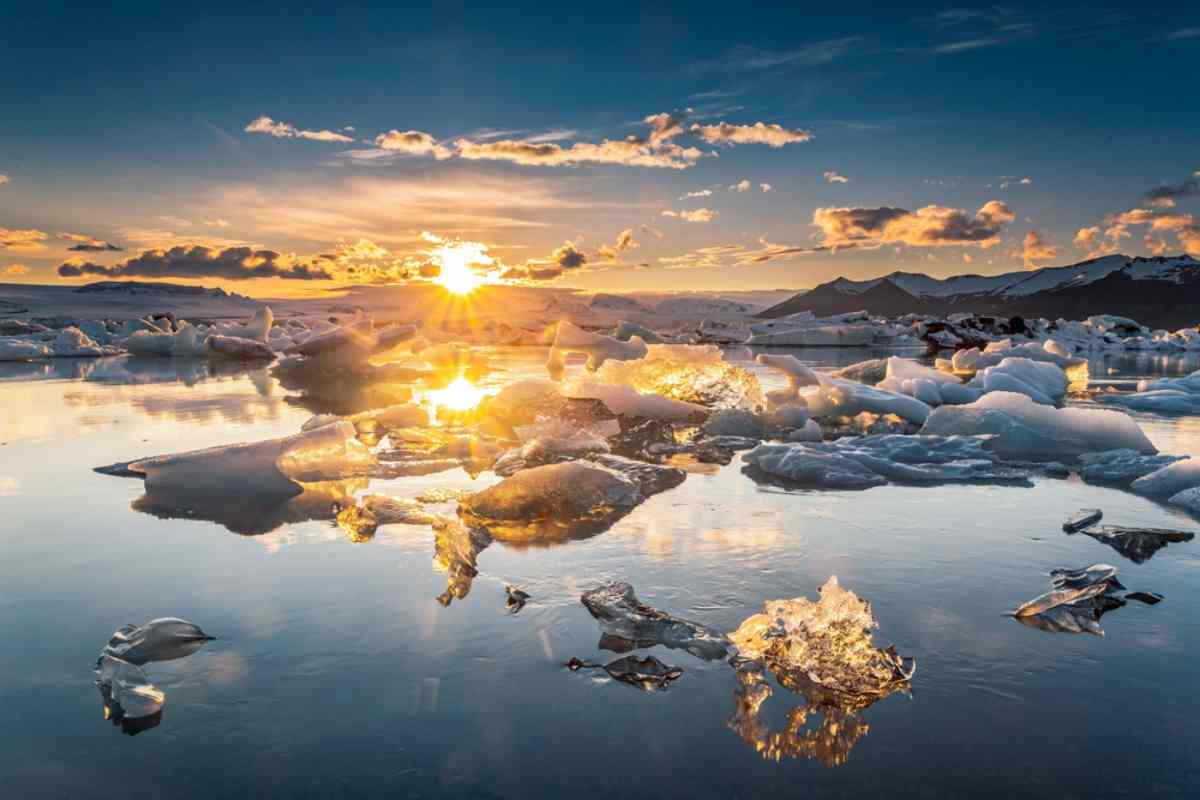
Heading towards Iceland’s interior, you’ll come across the unique area of Landmannalaugar, which is well-known for its active volcanoes, geothermal hot springs and gorgeous views. The colorful rhyolite mountains and epic lava fields make for amazing photos.
Located in the Icelandic Highlands, Landmannalaugar is a brilliant place for hiking and bathing. You’re sure to capture some otherworldly and ethereal pictures of this remote, geothermal wilderness.
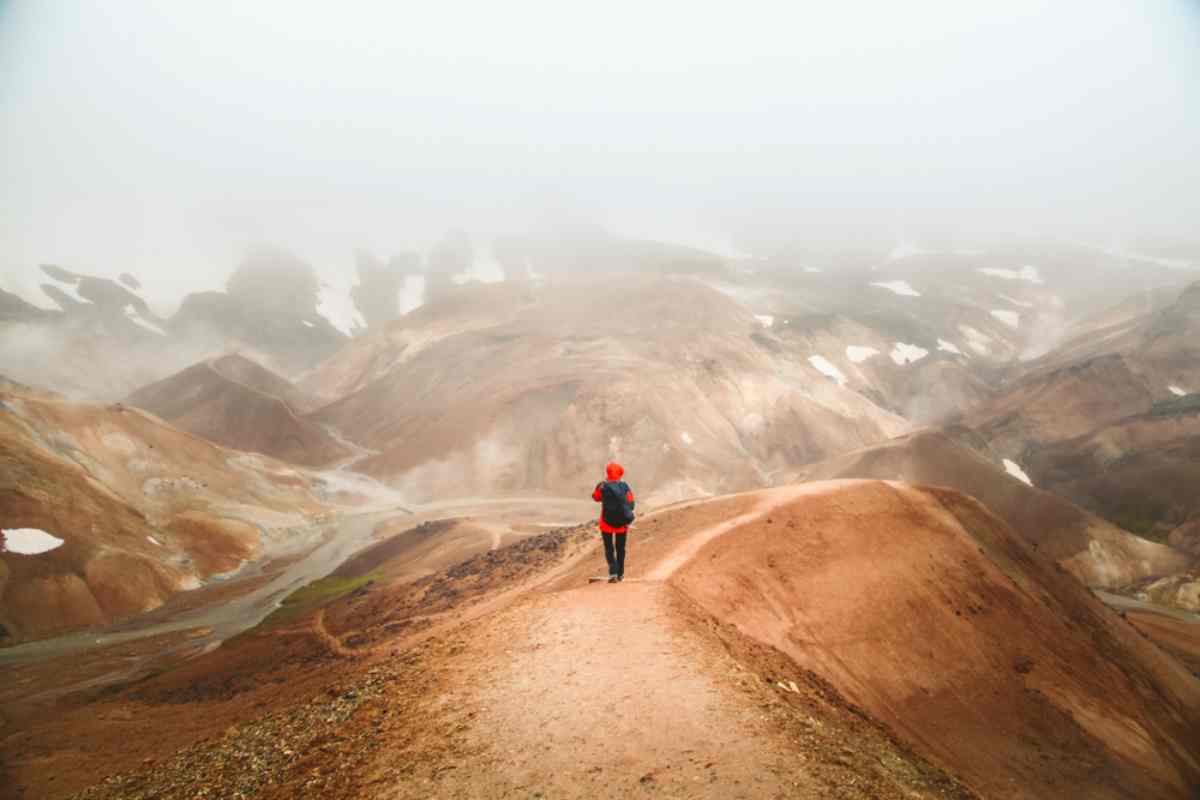
Known as ‘Iceland in miniature’, the beautiful Snæfellsnes Peninsula combines all of Iceland’s best bits and unique features into one spectacular area of outstanding natural beauty. From dramatic cliffs to incredible volcanoes and caves, Snæfellsnes Peninsula is a must-visit on your Iceland photography itinerary.
Here, you’ll find the most photographed mountain in the country: Kirkjufell. The distinctive shape of this iconic peak and its nearby waterfall makes a photo of these impressive natural features one of Iceland’s best pictures, for sure!
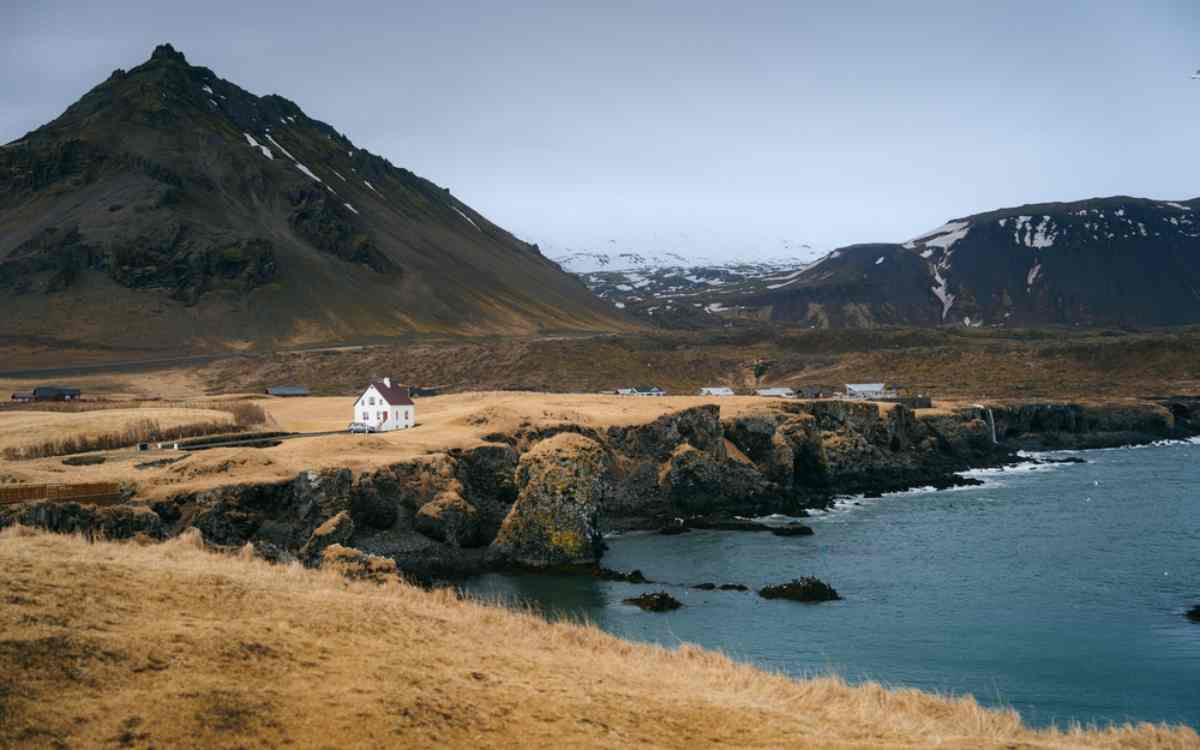
If you’re more interested in wildlife photography, we recommend heading to Myvatn Lake. Here, you’ll find a collection of rare birds that can be seen only in Iceland. In fact, the Myvatn area is home to the largest number of nesting ducks of any location in the world.
Visiting the beautiful lake and its stunning surrounding wetlands makes for an unforgettable day out and gives you a brilliant opportunity to take some incredible Iceland photographs.
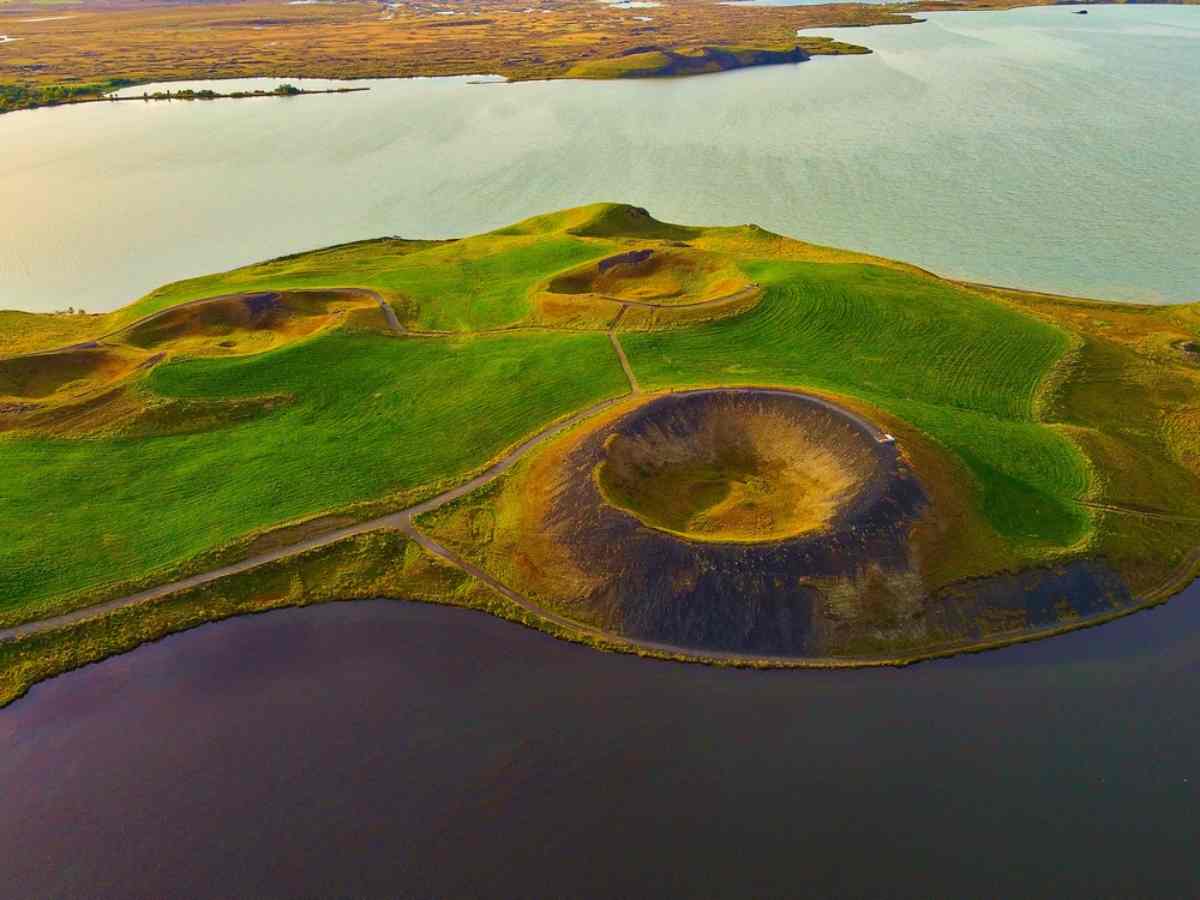
Keen wildlife photographers will also love Husavik, which is known as one of the best places for whale watching in the world. You can take a Husavik whale watching tour for the best chance to spot these majestic marine mammals.
Situated on the north coast of Iceland, this quaint fishing town is a brilliant photography subject in itself. The lovely harbor side, old church, colorful buildings and surrounding green mountains create a beautiful panorama of Icelandic seafront town life.
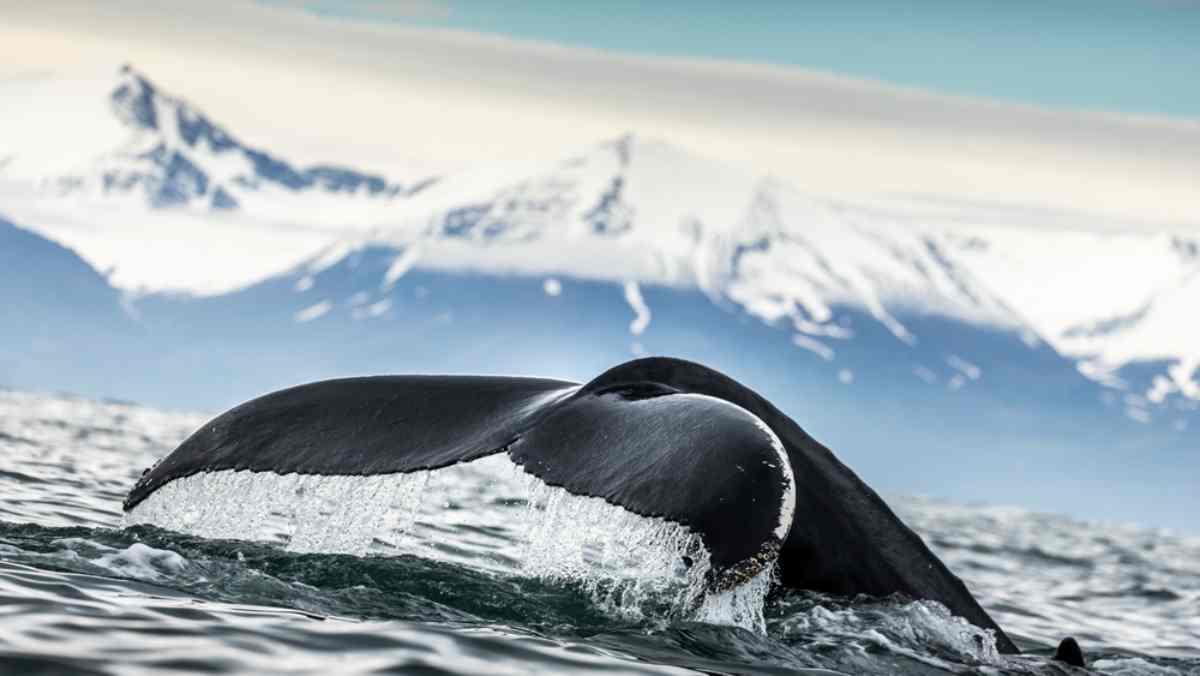
If you fancy heading up to the wild and remote Westfjords, you definitely have to check out Hornstrandir Nature Reserve. It’s the only place in Iceland where Arctic foxes are protected from hunting. You’re also likely to spot seals and whales here on Iceland’s northernmost peninsula.
At Hornstrandir, you’ll be able to photograph almost pristine nature, untouched by humans due to its vast area and remote location. With fjords, tundra, glaciers, mountain vegetation, bays and bird cliffs, Hornstrandir is an amazing Iceland landscape photography destination.
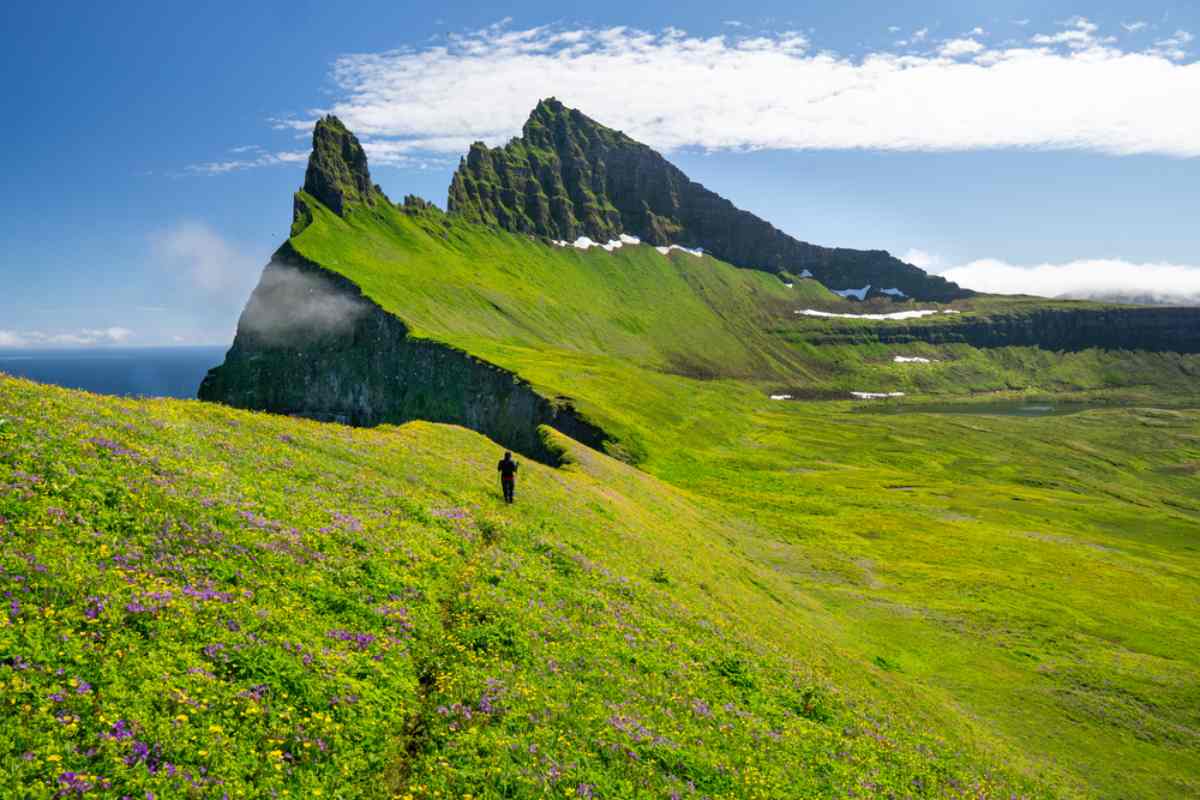
To shoot some incredible close-ups of the ‘clowns of the skies’, we recommend heading to the Westman Islands on a puffin boat tour. The largest colony of puffins in Iceland and, in fact, 20% of the world’s total puffin population lives on the Westman Islands!
Situated off Iceland's southwest coast, the Westman Islands can be reached by a short ferry ride that takes just over half an hour. Note that the ferry for Westman Island tours only operates during the summer months.
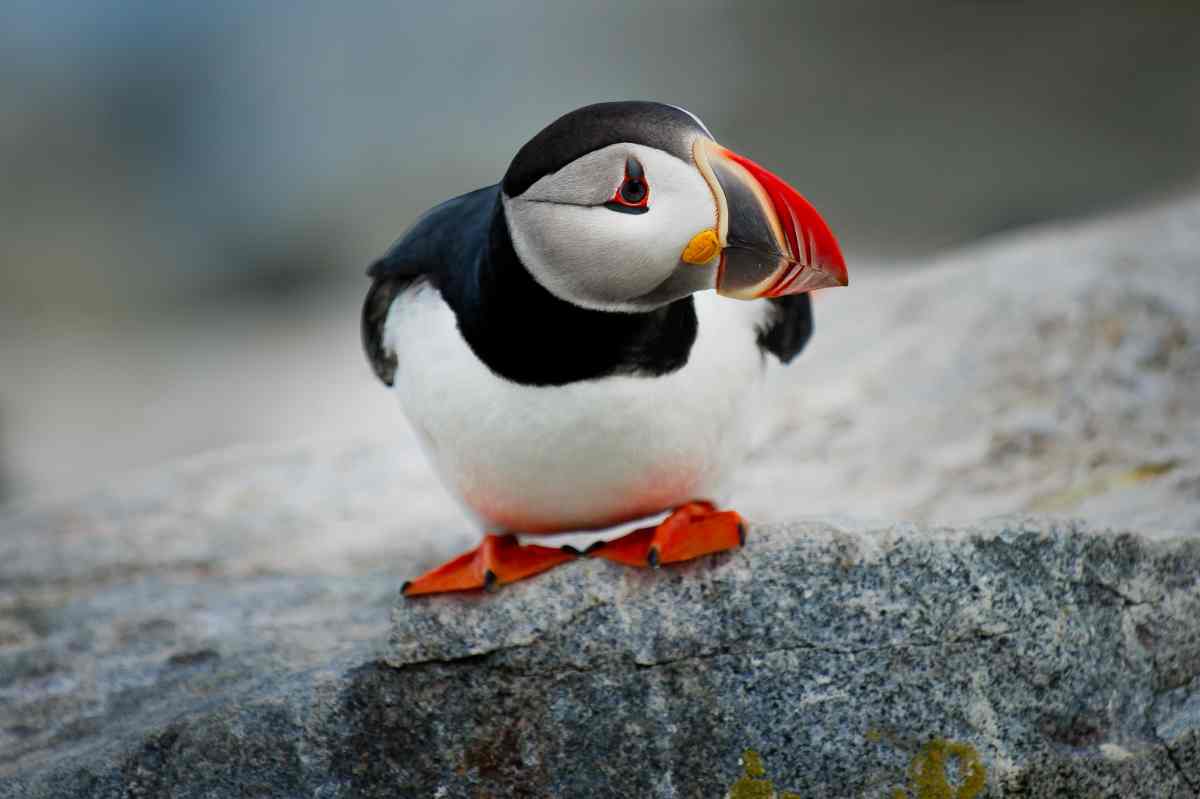
Where better to photograph Iceland's famous landmarks than the vibrant capital of Reykjavik itself? You can practice your urban photography in this enchanting city, capturing sights such as the iconic Hallgrimskirkja church, the distinctive glass Harpa concert hall, the famous Sun Voyager statue and the picturesque harborside.
If you need some extra gear or just want to treat yourself to some photography goodies for your Iceland adventure, you can find a few camera stores in Reykjavik city center, including Beco Professional Camera Store and Reykajvik Foto.
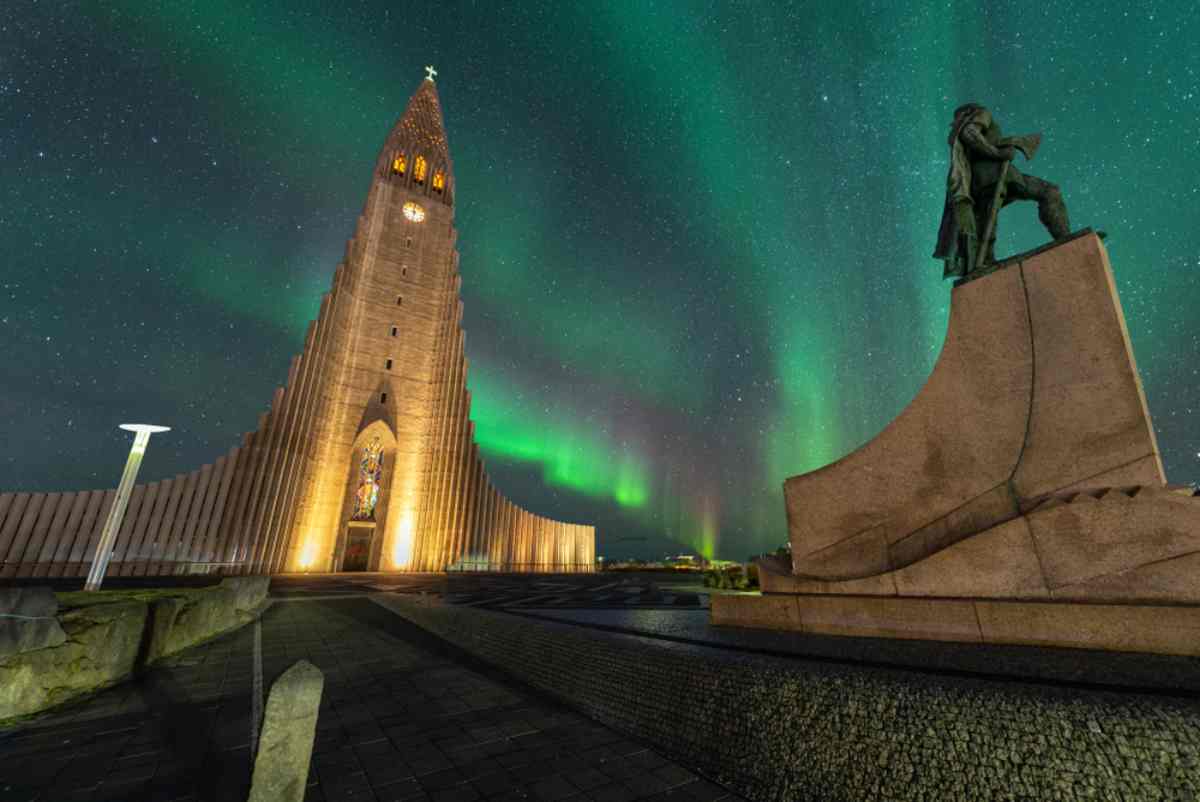
The best time to visit Iceland for photography will really depend on what it is you’d like to photograph. For example, if you’re a keen wildlife photographer, you might want to make sure you’re in Iceland during whale season, which is from April to September, or puffin season between May and August.
If you’re keen to capture the Northern Lights, you’ll be best visiting Iceland in winter and if you want to photograph the Midnight Sun, you’ll need to be in Iceland during summer.
Aside from this, it’s important to note that the daylight hours are significantly shorter in the winter season, so you’ll have less time to travel out and about on your Iceland winter photography tour during the day. As long as you plan ahead and schedule in your day trips, you should be able to manage this well and still have enough time to visit all your favorite destinations.
Iceland is a winter wonderland during the colder months, with blankets of snow and glistening ice covering much of the landscape. During summer, you’ll find green mountain valleys and spectacular sunsets over cascading waterfalls. Whenever you choose to visit Iceland, we can guarantee there will be incredible things to photograph!
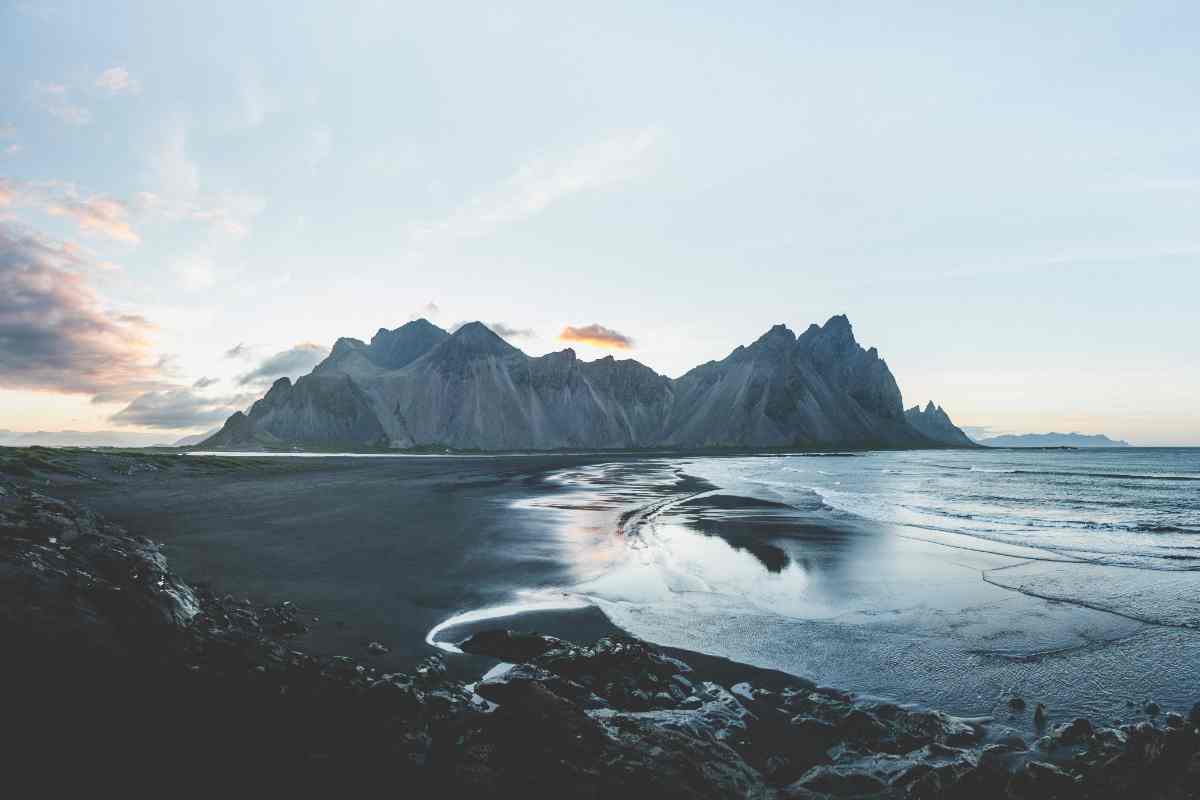
Capturing the vibrant colors of these spectacular aurorae is at the top of many photographer’s bucket lists, and with good reason! The Northern Lights are truly magical and unforgettable.
You’ll need to visit Iceland during the Northern Lights season from September to April to be in with a chance of photographing this amazing light show. The peak time for viewing the Northern Lights in Iceland is from November to February when the nights are longest and darkest.
Our top Iceland Northern Lights photography tips are to use a tripod to reduce any shakiness as you may have to be outside for extended periods of time, make sure your DSLR camera is optimized for nighttime shooting and use a long exposure time to ensure you can capture the spectacular lights as they dance across the sky.
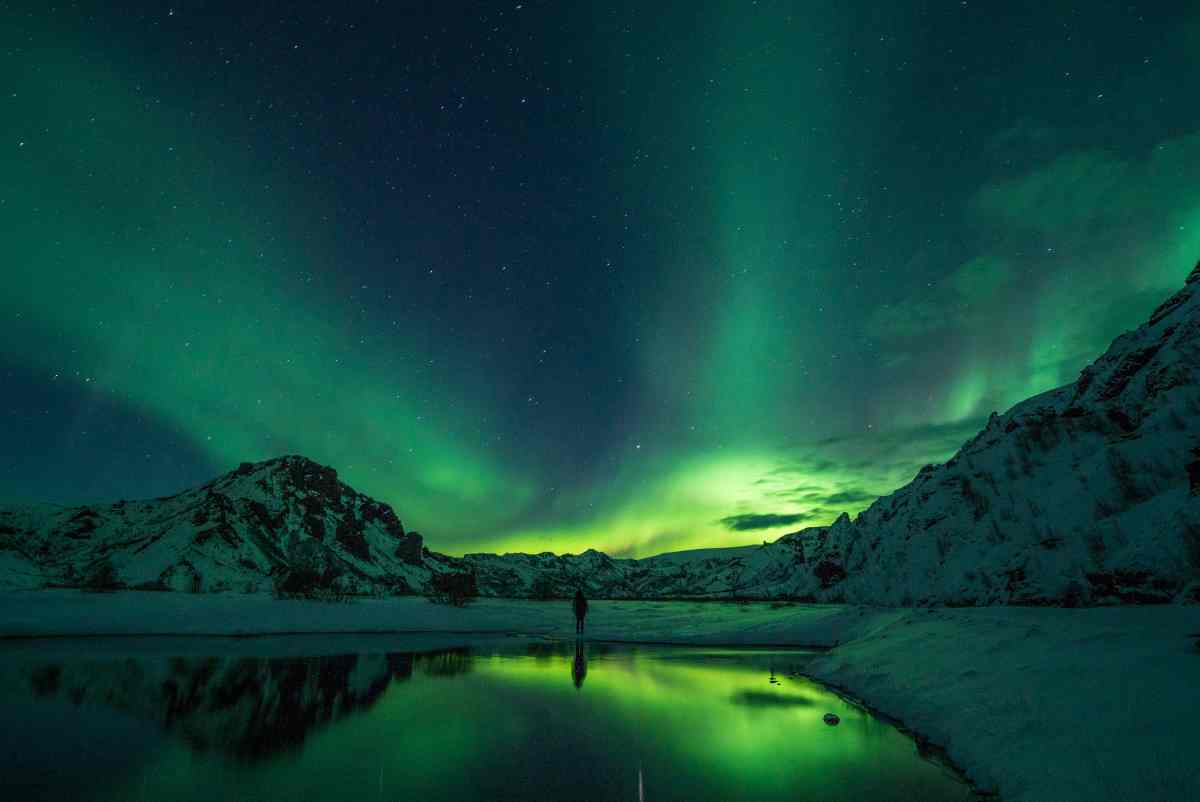
Due to Iceland’s northerly latitude, the country experiences almost 24 hours of daylight during summer, leading to the amazing spectacle of the Midnight Sun where the sun is still shining at 12am! Witnessing the Midnight Sun at the top of a mountain makes for some amazing photos.
If you want to photograph the Midnight Sun in Iceland, you’ll need to visit the country around the summer solstice in mid-June. You’ll also need a tripod to get the best quality pictures possible.
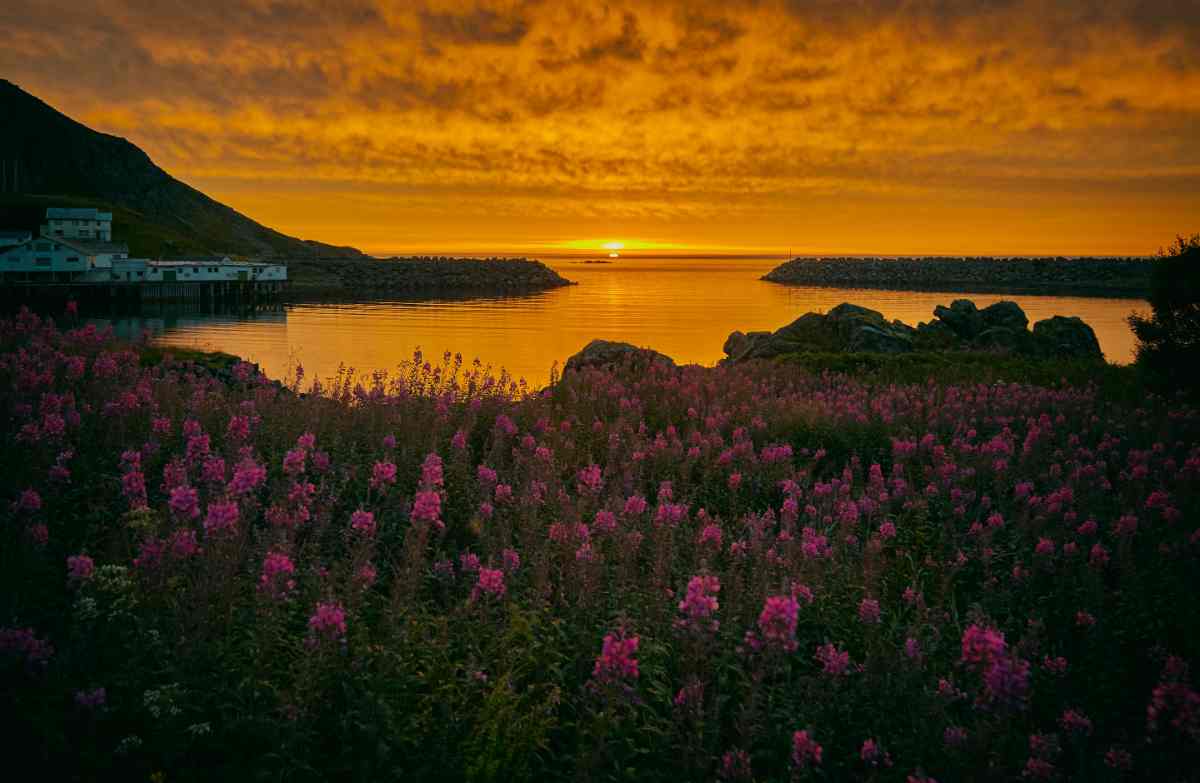
The unique and often fairly remote environments of Iceland are most likely different to anything you’ve ever photographed before. Check out our top Iceland photography tips to make the most of your time in this incredible country:
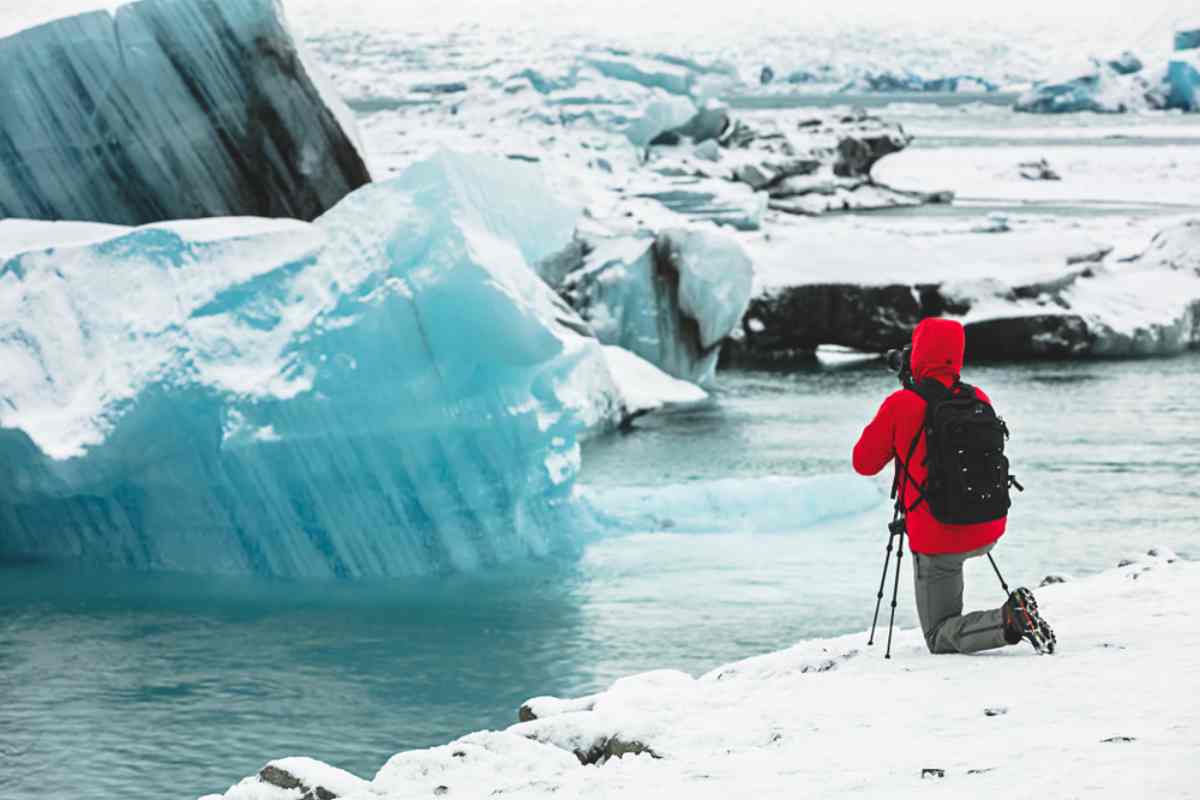
If you’re looking for an Iceland photography guide, you might like to join a tour where you can meet fellow photographers and learn from qualified instructors. Whether you choose an Iceland summer photography tour or an Iceland winter and Northern Lights photography tour, you’ll have an amazing time exploring the country’s natural wonders and learning how to take incredible photographs at the same time.
Most Iceland photography tours are done in small groups, where you can get hands-on instructions and advice from award-winning photographers. You’ll usually get the chance to practice many different kinds of photography, focusing mainly on landscape and wildlife.
You can find Iceland photography tours that last from anywhere between 3 days to 10 days, with most tours lasting around a week. If you don’t have that much time, you might prefer an Iceland photography workshop that lasts just a day or several hours.
Some Iceland photography workshops may include overnight stays, but you can also find some 1-day photography workshops in particular locations, such as the area around Jokulsarlon Glacier Lagoon on the south coast or the beautiful Snæfellsnes Peninsula.
We recommend exploring the available Iceland photography trips, tours and workshop options before deciding which one is best for you.
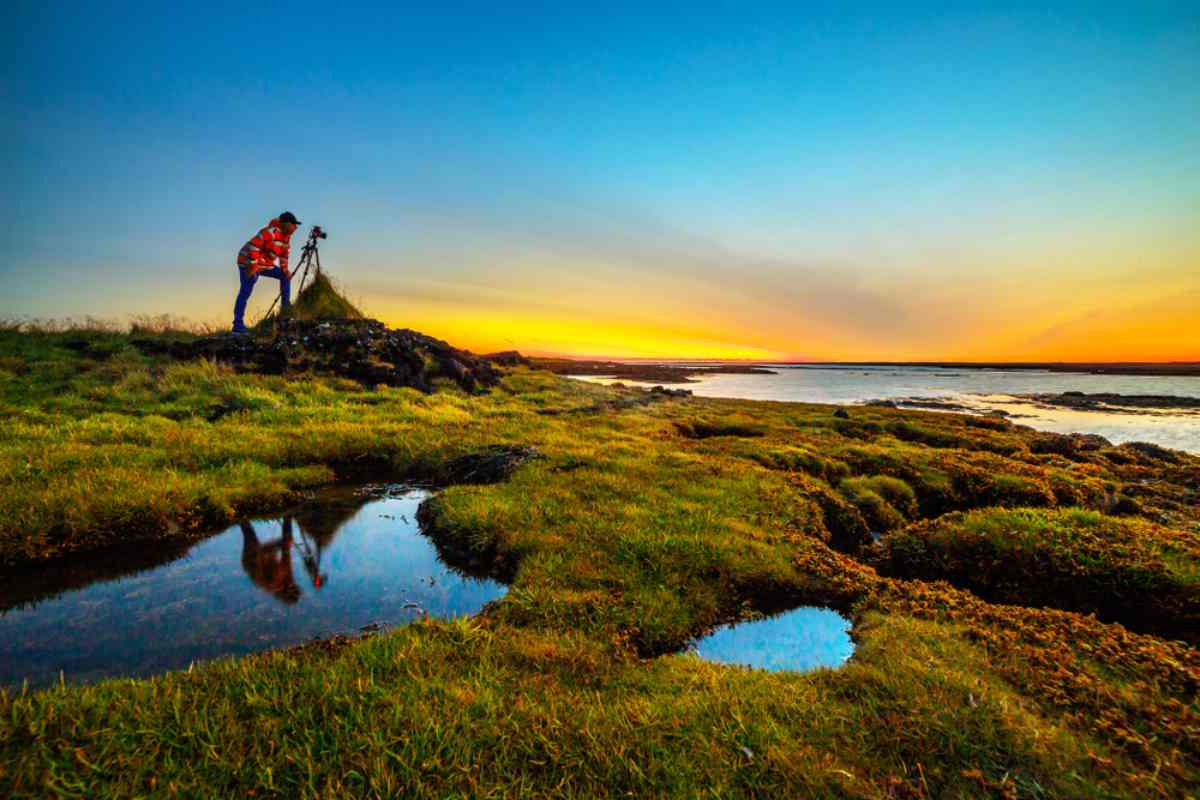
Excited for your very own Iceland photography trip? Let’s get planning the perfect Iceland photography adventure by finding accommodation and travel tickets, as well as an affordable rental car in Reykjavik, so you can explore Iceland’s top photography destinations to your heart’s content.
Taking a self-drive tour around the unique island of Iceland is an amazing way to see all the sights and get practicing your Iceland landscape photography. You can travel on your own time and make sure to see everything you want to see – what’s not to like?!